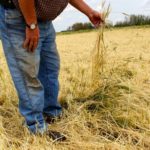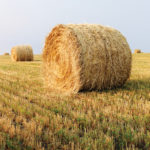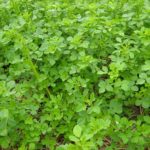CNS Canada — There seems to be no shortage of forages in Western Canada this year, as wet weather has allowed grasses to keep progressing at a steady rate. Finding high-quality hay could be the challenge, however, according to crop watchers in Saskatchewan and Manitoba. “It’s been tough for guys to put four to five […] Read more

High-quality forages tougher to find this year

New non-bloating legume can power up your pastures
After years of development, a new and improved sainfoin variety is being field tested across the province
Reading Time: 2 minutes High-legume pastures can be profitable and productive, but many cattle producers are scared to use them because of the risk of bloat. That’s why Alberta Agriculture and Forestry along with the Agricultural Research and Extension Council of Alberta have teamed up to do sainfoin trials across the province. “Sainfoin is a non-bloating legume,” provincial beef […] Read more
Grazing cattle on legumes offers unique benefits
Reading Time: 2 minutes There is a risk of bloat from grazing high-legume pastures, but it can be done with planning and attention. “I’ve heard it said that there has been more money lost due to fear of bloat than has ever been lost due to bloat itself,” said Ian Murray, an Acme rancher and chair of the Agricultural […] Read more

If the rain won’t go away, you still have options when haying
Making haylage is a good option, but there are several things to keep in mind, says crop specialist
Reading Time: 3 minutes What do you do when the weather conspires against you and hay refuses to dry? “You start looking for alternatives,” said provincial crop specialist Harry Brook. “A number of alternatives is available to consider when hay will not dry down to the 16 per cent moisture level that’s considered suitable for long-term storage.” One form […] Read more

Salvaging hail-damaged crops
Tests recommended to ensure there is no possibility of nitrate poisoning
Reading Time: 2 minutes Storm damage to crops can result in problems with nitrate accumulations, especially if the crops were heavily fertilized or manured in the spring to optimize yield. “With volatile weather comes storm damage and, for some producers, this means salvaging crops for feed,” says Andrea Hanson, beef extension specialist, Alberta Agriculture and Forestry, Airdrie. Hanson cautions […] Read more

Rain causes extreme haying delays
CNS Canada –– Excessive rain and high humidity over the past few weeks are causing major problems for haying operations in Saskatchewan and Manitoba. “We should be well underway in our progress and I think we are far behind right now,” said Leanna Rousell, executive director of the Saskatchewan Forage Council. The majority of Saskatchewan […] Read more

How to establish a fair price for standing hay
Buyers should pay by the ton, not the acre, and there should be 10 to 30 per cent allowance for weather risk
Reading Time: 2 minutes Determining a fair price for standing hay isn’t an exact science, says a provincial farm business management specialist. “Hay prices are difficult to establish as they are affected by a combination of factors such as spring inventory carry-over, pasture conditions, feed competitors, cutting date, quality, yield, and location,” said Dean Dyck. “As we saw in […] Read more

Sugar is sweet for increasing cattle gain
Reading Time: < 1 minute Cattle that consume forages with higher sugar content have higher rates of gain, improved performance, and better rumen health. In a Beef Cattle Research Council webinar, two forage experts give tips for increasing sugar content in forage, such as cutting forages in late afternoon as sugar content peaks 11 to 13 hours after sunrise and why […] Read more

‘Eco-buffer’ boosts pasture productivity for Alberta producer
Letting nature do its job got Don Ruzicka off a treadmill of clearing trees, draining wetlands, and poor returns
Reading Time: 4 minutes Some people look for signs — other people just find them. For producer Don Ruzicka of Killam, the motivation behind the past three decades of land management on his farm was quite literally a sign. Before he purchased his grandparents’ farm in 1983, Ruzicka worked in the logging industry. “The first day I flew into […] Read more

Coexistence plan for GM alfalfa won’t eliminate risk
Expert says stopping the spread of the glyphosate-tolerant trait is virtually impossible, but levels can be kept ‘very, very low’
Reading Time: 3 minutes The recently released “coexistence plan” for genetically modified alfalfa in Western Canada doesn’t offer any guarantees that conventional and organic crops won’t be contaminated, says an expert on gene transfer. “It really depends on what you’re trying to achieve,” said Rene Van Acker, a professor of plant science at the University of Guelph. “If it’s […] Read more

